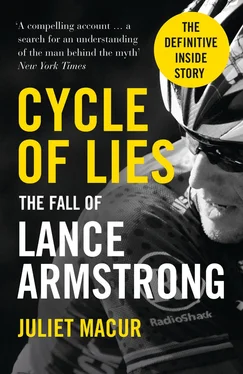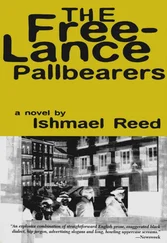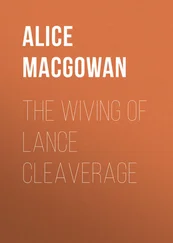Willine was a single mother with an ex-husband always late on child support payments, when he sent them at all. For forty-three years, she worked at Dallas’s First National Bank. Her sense of family was so strong, she says, that she insisted her two daughters and Sonny go to church together three times a week. She never criticized her absent ex-husband because she wanted her children to make up their own minds about him. She and Linda became as close as best friends during Linda’s pregnancy.
On Linda’s seventeenth birthday, she and seventeen-year-old Sonny were married in a Baptist church packed with fellow high schoolers, some no doubt noticing the bride’s baby bump beneath her flowing, pleated white dress. That was February 1971. The boy arrived in September.
He was named after Lance Rentzel, the Dallas Cowboys star wide receiver who the year before was arrested for exposing himself to a ten-year-old girl. At the window of the maternity ward, his father saw that the newborn’s head was misshapen: too long, too narrow. His mother, a petite woman, delivered him at 9 pounds, 12 ounces.
“What’s wrong with his head?” his father asked, as tears rolled down his cheeks.
“It’ll get better,” one of his sisters said. “It’ll be fine, I know it will.”
Linda took a part-time job at a grocery store. Sonny worked at a bakery and delivered newspapers, but fatherhood didn’t bring with it a sudden maturity. As a minor, he had made frequent appearances in juvenile court. In 1974, when his son was two and a half, and he and Linda had already divorced, Sonny Gunderson spent his first night in jail as an adult. He had been arrested for breaking into a car.
Their marriage lasted for just over two years. Linda would claim in her book that Sonny had been so rough with her that her neck and arms were bruised. Years later, the ex-husband admitted that he had slapped her, but only once.
Gunderson told his family that he spent months after the divorce in a zombie-like state. He wanted to fix what he had broken, but had no idea how. He often sat across the street from his son’s day care center and watched the boy play on the playground. He couldn’t pay the child support, or wouldn’t. He ignored the demand notes as they piled up in his mailbox, accusingly.
To his father’s family, Armstrong was Lance Edward Gunderson. They still saw him at Christmases and other family gatherings, where he played with his cousins. They still have photos of him, yellowed and fading. His grandmother has a 4×4-inch photo album made for her by Armstrong’s mother. Linda signed the album with her boy’s name, “To Mom-o Willine. Love, Lance.”
Willine “Mom-o” Gunderson is Armstrong’s paternal grandmother. In nearly every photo of her with the infant Lance, she is kissing him, her eyes closed, the kind of moment a grandmother wants to last forever. Her son is partly to blame for how short-lived it really was.
Whenever he saw Lance, Gunderson acted like a kid himself. While his mother and two sisters watched, he gave the boy rides on his ten-speed bike and motorcycle. Inevitably, some outings ended with acrimony. Lance once came home with a quarter-sized burn on his calf where it had rubbed against the motorcycle’s exhaust pipe. Another time, he suffered a bloody toe when his foot became tangled in the spokes of a bicycle. Linda blamed Sonny for his neglect and chastised Willine for allowing the boy to get hurt while in her care.
Willine told the young mother, “You can’t keep him in a golden cage his whole life.”
Linda snapped back, “I’m the one that knows what’s best for him.”
“She was maternal,” Willine says, “but she was so young, she didn’t understand that babies love more than one person in their life. She didn’t want him to love anybody but her. But babies love anybody that will love them. That doesn’t take from the love that they have for their mother.”
When Linda filed for divorce—on February 15, 1973—she just couldn’t stand Sonny anymore. She married Terry Armstrong, a salesman, in May 1974, a year after her divorce papers were signed. Though Sonny couldn’t know it at the time, his life with Lance would soon be over.
The Armstrongs would eventually move away, ending any contact with the Gundersons, and Terry officially adopted Lance as his son. Linda said in her autobiography that Willine agreed it was best for Lance to never see the Gundersons again. But whenever someone suggests as much to Willine her mouth drops open. “Ooh, no, no,” she says.
Willine last had direct contact with Linda and her family when Lance was five or six. She had gone to his maternal grandmother’s house with Christmas gifts for him. “Linda told me not to take anything more from you,” the grandmother told Willine. “What little stuff you give him is not worth the trouble Linda has with Lance after he has had some contact with you.”
Shaking with distress, Willine quietly said, almost to herself, “You’ve got no right to tear a family apart,” and walked away with the presents in her hands and tears in her eyes.
For years after Lance was gone, Willine and Micki kept his picture inside oval gold lockets that hung around their necks. In his grandmother’s locket, he is an infant, maybe ten months old, wearing a fire-engine-red romper. In his aunt’s, a toddler with a goofy smile.
To this day, Willine is haunted by the last time she saw Lance. She was babysitting him, and he was about four. His mother swung by to pick him up, and found him under the Gundersons’ dining room table. The grandmother remembers the boy saying, happily, “I’m just going to live under here. I won’t take up too much room. I’m just going to live under this table.” But his mother grabbed Lance by the arm and led him through the front door, the boy crying as they went. She slammed the door. The grandmother never saw the boy again.
The Gundersons had no idea that the Armstrongs were living in Richardson, a northern suburb of Dallas, and had no money to hire a lawyer or investigator to find him. The Gundersons held out hope that Armstrong would come looking for them someday, maybe when he had children of his own. At their church—Four Mile Lutheran, which his relatives helped found and build east of Dallas 165 years ago—the congregation for years had prayed for Armstrong every Sunday.
The Gundersons wrote to Armstrong occasionally, but he never answered. They rarely called Linda’s family, and when they tried they heard only the click of a phone being put back into its cradle.
Linda’s brother, Alan, felt sorry for Sonny and was the Gundersons’ only source of information about the boy. He once came over to Sonny’s place and gave him a school picture of Armstrong, a color 8x10. The Gundersons inspected Lance’s face closely, the first time they had seen it in more than five years.
He had the same deep blue eyes as his father, and the same high cheekbones. They wondered if he possessed other family traits: Would Lance be hard and stubborn? Did he have problems with authority? Did he see the world in extremes? Did he hold grudges?
Armstrong’s grandmother is now nearly ninety. When she turned eighty, she moved in with Micki, who resides in one of Dallas’s most exclusive neighborhoods, among mansions and estates with guardhouses. Her husband, Mike Rawlings, was elected mayor in 2011.
Willine’s thick brown hair has turned snowy white. Her once rod-straight posture has become permanently bent. She uses a walker and needs thick glasses and bright lights to see. Her hearing is going, too, but her mind is sharp. Next to her bed she has photos of six of her seven grandchildren and six of her eleven great-grandchildren—but not a single photo of Lance Armstrong at any age, nor photos of any of his five children. It’s as if Lance Armstrong had never existed in her family.
Читать дальше












